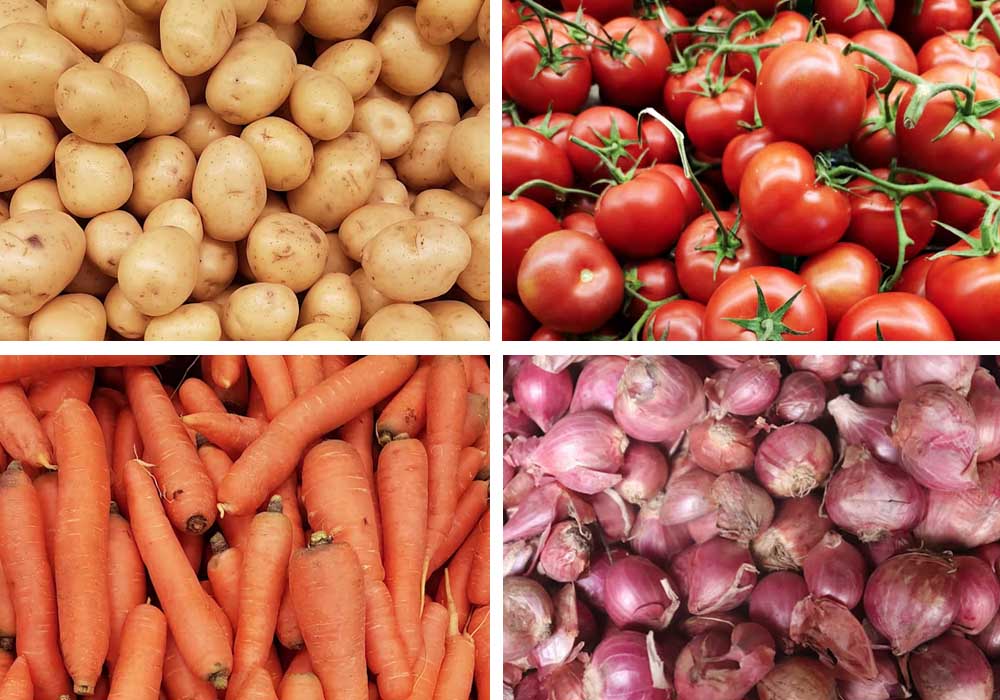Potato Sorting Machine
Tomato Sorting Machine
Carrot Sorting Machine
Onion Sorting Machine
Pepper Sorting Machine
Cucumber Sorting Machine
Broccoli Sorting Machine
Leafy Greens Sorting Machine
Mushroom Sorting Machine
Green Bean Sorting Machine
Frozen Vegetable Sorting Machine
Dehydrated Carrot Sorting Machine
Dehydrated Onion Sorting Machine
Dehydrated Garlic Sorting Machine
Dehydrated Bell Pepper Sorting Machine
Dehydrated Tomato Sorting Machine
Dehydrated Spinach Sorting Machine
What is Vegetables Sorting
Vegetables sorting refers to the advanced technological process of separating various types of vegetables based on their color, size, shape, and other optical characteristics using high-precision color sorters. This technology ensures that only high-quality vegetables free from defects, impurities, or discoloration make it to the final product. With increasing consumer demand for quality produce, vegetable sorting has become a critical step in food processing and packaging industries.
Modern vegetable sorting solutions handle a wide variety of produce including leafy greens, root vegetables, peppers, tomatoes, and more. These automated systems help farmers and food processors maintain consistency, improve yield, and meet stringent quality standards. Whether removing foreign materials, sorting by size, or grading by color, automated sorting systems provide accuracy and efficiency that manual methods cannot achieve.

How Vegetables Sorting Works
Vegetable sorting machines utilize high-resolution CCD optical sensors and advanced imaging technology to analyze each piece of produce as it passes through the system. The sensors capture detailed color information and surface characteristics, detecting even slight variations in color, bruising, or texture. When an undesired vegetable or foreign material is identified, the machine triggers a high-speed air ejection system to remove it from the production line.
The sorting process begins with vegetables being fed into the machine where they are aligned for individual inspection. Sophisticated image processing algorithms analyze each item in real-time, distinguishing between acceptable and defective produce with remarkable accuracy. This ensures only the highest quality vegetables proceed to packaging, significantly reducing waste while improving product consistency and market value.
Core Features and Benefits of Vegetables Sorting
Modern vegetable sorting solutions offer unparalleled accuracy in detecting and removing defects, discolored items, and foreign materials. These machines can process thousands of vegetables per minute, vastly outperforming manual sorting in both speed and consistency. The ability to customize sorting parameters allows processors to adapt the machine for different vegetable types and quality requirements, making it a versatile solution for diverse produce.
Beyond quality control, vegetable sorting machines contribute to food safety by eliminating potentially harmful contaminants. They reduce labor costs while increasing throughput, providing a quick return on investment. The non-destructive nature of optical sorting preserves vegetable quality, ensuring nutritional value and appearance remain intact throughout processing.
Technical Specifications of Vegetable Sorting Machines
High-performance vegetable sorters feature full-color CCD cameras with resolutions capable of detecting minute defects as small as 0.2mm. Processing capacities range from 3 to 15 tons per hour depending on the model and vegetable type, with ejection accuracy rates exceeding 99%. These machines incorporate smart learning algorithms that improve detection accuracy over time as they process more material.
Modern sorters come equipped with user-friendly interfaces for easy operation and parameter adjustment. Many models feature multi-camera systems for simultaneous inspection from multiple angles, ensuring comprehensive quality control. Hygienic designs with easy-clean surfaces meet food safety standards, while energy-efficient operation minimizes power consumption.
Applications of Vegetable Sorting Technology
Vegetable sorting technology finds application across fresh produce processing, from large-scale packing houses to specialty organic farms. It's particularly valuable for high-value products like baby carrots, cherry tomatoes, and prepackaged salad mixes where appearance consistency is crucial. The technology also plays a vital role in frozen vegetable processing and value-added vegetable product manufacturing.
Beyond conventional produce, vegetable sorters are used in organic processing where appearance standards are strict, and in food service operations requiring consistently sized ingredients. The adaptability of these machines allows them to handle everything from delicate herbs to sturdy root vegetables with appropriate configuration adjustments.
Buying Guide
When selecting a vegetable sorting machine, consider the specific types of vegetables you'll process and their typical defect profiles. Processing capacity requirements should match your production volume, while machine flexibility is important if you handle multiple vegetable varieties. Look for food-grade construction, easy-to-clean designs, and robustness suitable for wet processing environments when needed.
Advanced features like spectral imaging for internal quality detection and cloud-based performance monitoring can provide long-term value. Consider the availability of local service support and the machine's compatibility with your existing processing line. Many manufacturers offer test runs with your actual produce to evaluate machine performance before purchase.
Maintenance Guide
Regular maintenance is essential for optimal vegetable sorter performance. Daily cleaning removes vegetable residues that could affect optical sensors, while periodic calibration ensures sorting accuracy remains consistent. Air systems and ejection nozzles require particular attention in vegetable applications where moisture and organic material may cause clogging.
Scheduled professional servicing helps maintain the machine's precision over time. Keeping detailed maintenance records aids in predicting part replacement needs and ensures uninterrupted operation. Proper sanitation procedures are especially important in vegetable processing to meet food safety requirements and prevent cross-contamination.